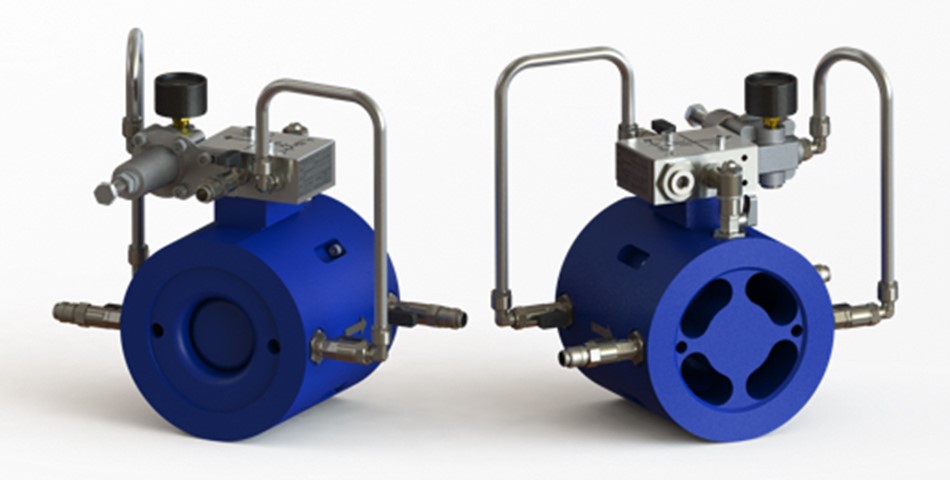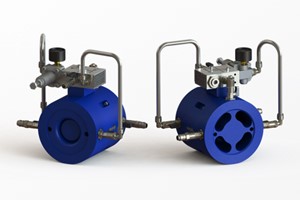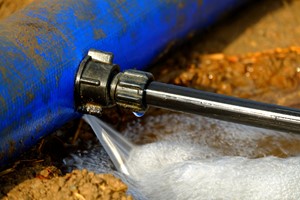It’s not easy being a water utility. Customers expect flawless service yet are also often the first to alert utilities to problems. Leaks continue to plague companies with both operational and reputational problems. Maintenance and diagnosis usually entail costly excavation works.
All of which is to say that water companies are actively looking for ways to be smarter. To know about (and fix) problems before the customer sees the effect, to better predict and more accurately map leakages to reduce losses and hone maintenance issues. To go from reactive to proactive.
But when up against increasing demands and often ageing infrastructure, that’s easier said than done. It’s unlikely we’ll get there with piecemeal improvements either – the industry needs a radical innovation moment that shakes up the fundamentals of how things work. Much like the iPhone did to the mobile phone market in 2007. And, as it turns out, valves are a good place to start.
Tough times for the industry
A ‘smart’ approach has long been on the industry’s wish list, but it becomes increasingly important day by day. Just look at the outrage in the UK when hosepipe bans were suggested in response to a recent heatwave – outrageous, in the eyes of many, when weighed against the 3 billion liters of treated water lost every single day of 2017 in England and Wales. For the utilities, faced with the task of operating with and upgrading often Victorian era infrastructure, it’s very much a rock-and-a-hard-place situation.
And the UK is a relatively wet country. For utilities in drier climes such as the Middle East, there are other challenges. A 2017 report stated that the nations in the Gulf consume an average of roughly 816,000 liters of water per person per year – 65 percent more than the world average. As a result, utilities such as the Dubai Electricity and Water Authority continue to invest heavily in smarter, upgraded systems.
As populations grow around the world, placing ever greater demands on water infrastructure, and climate change increases incidences of extreme weather such as drought, smarter approaches to water will become even more pressing.


A watershed moment needed
Of course, there has been innovation and improvement in the water sector over the years. But it has been an incremental kind, tweaking engineering designs and adding a patchwork of digital assets, such as pressure sensors here and there.
This incremental approach is crucial – as was the progression through Nokia 3210, 3310, 3410 – but now it’s time for the iPhone moment – something that makes a much more radical, lasting and digital change.
What does ‘smart’ mean now
Now though, we are at inflection point where the need for digitalization is pressing and the technology is becoming mature enough to meet that need.
A smart system must be proactive, not reactive. That means predicting, identifying and (preferably) fixing problems before they affect customers – or if that’s not possible communicating ahead of time that there will be disruption.
This applies to leaks but also to water quality. At the moment, water quality is typically tested by taking samples from the tap and packing it off to a lab. There is no visibility within the distribution infrastructure.


So, imagine a system where problems are identifiable and fixable before they reach the customer. Where problems could be spotted and located to a fine level of granularity – making maintenance and repairs easier, cheaper and more efficient. Where, furthermore, utilities can optimize their systems against multiple parameters across the breadth of their network.
That would represent an iPhone moment, fundamentally altering the relationship utilities have with their infrastructure.
One crucial technology for realizing this vision is the next generation of pressure reducing valves (PRVs). PRVs have been around for over a century, only recently undergoing significant innovation from an engineering standpoint. Now, however, they are undergoing a second, digital transformation.
Modern PRVs are equipped with sensors, collecting information on metrics such as pressure and even water quality. Crucially – thanks to modern, more affordable battery, communication and energy harvesting technologies – these can now feed this information back to the control room for analysis and action. For example, if leaks are detected, the valve can be controlled remotely to reduce pressure and therefore losses. PRVs will be the “smart valves” at the center of an intelligently optimized and controlled network, used to deliver fine pressure control in any way needed.
The smartest systems will then use technologies such as analytics and machine learning to constantly analyze that incoming stream of data to optimize maintenance schedules and asset replacement and even predict problems before they occur. In a flash, utilities that implement such a system would find themselves managing lit networks, rather than dark ones; enjoying visibility and control that they never had before.
Future-proofing
Water infrastructure upgrades are expensive and time-consuming – creating truly smart networks is not a trivial matter. However, this would represent an iPhone moment in another respect: once the radical shift is made, the market can return to incremental innovation. The first iPhone may have been a revolution, but the subsequent models have been evolutions since.
Once a data-rich, sensor-soaked network is in the ground, utilities will be able to more easily implement incremental upgrades over time. Connectivity means that software and firmware can potentially be upgraded without excavation and the control room can invest in ever more advanced analytics.
A lot has been written about topics such as the industrial internet of things (IIoT). Undoubtedly, we stand to gain a great deal as societies from smart factories, grids and cities. But a smarter approach to water is an equally important step. With modern valve, sensor, communication, battery and energy harvesting technologies, forward-thinking utilities are poised to take it. By doing so we stand to cut leakages, improve water quality and utilities can enjoy their iPhone moment.












